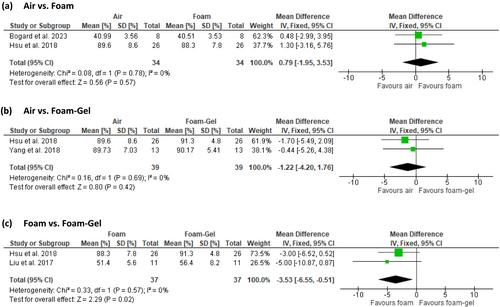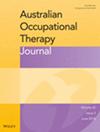The effect of wheelchair cushion properties on the microclimate at the cushion-user interface: A systematic review and meta-analysis
Abstract
Introduction
Pressure injuries are a preventable yet highly prevalent health concern. Wheelchair cushion prescription can have significant implications for wheelchair users' risk of pressure injury development, which can impact functional abilities and quality of life. The efficacy of a wheelchair cushion to redistribute pressure has been well-researched, but the efficacy to manage the microclimate is less clear, particularly in warm-hot environments. The aim of this study was to systematically review studies examining the effect of wheelchair cushions on temperature, moisture and thermal perception to determine which cushions are superior to improve these responses.
Method
A systematic review with meta-analyses of randomised cross-over and randomised control trials of wheelchair cushion interventions on measures of temperature, moisture, and thermal perception was conducted.
Results
Eight studies were identified that met the eligibility criteria and six meta-analyses were conducted. Pooled analyses identified a significantly lower temperature on foam-gel cushions compared to air cushions (MD = 0.80, 95% CI: 0.31, 1.29; p = 0.002) and a significantly lower temperature on foam-gel cushions compared to foam cushions (SMD = 0.76, 95%CI; 0.45, 1.06; p < 0.00001). Pooled analyses also demonstrated significantly lower relative humidity (i.e., moisture) on foam cushions compared to foam-gel cushions (p = 0.02). Differences in thermal perception were inconclusive due to limited data found.
Conclusion
It is clear that not one cushion is ideal in managing all aspects of microclimate, as foam-gel cushions were the superior cushion to manage temperature and foam cushions were the superior cushion to manage moisture. This article provides occupational therapists and other health professionals with evidence-based information to assist with wheelchair cushion prescription that minimises the temperature and moisture accumulation, and associated risk of pressure injury for wheelchair users.


 求助内容:
求助内容: 应助结果提醒方式:
应助结果提醒方式:


